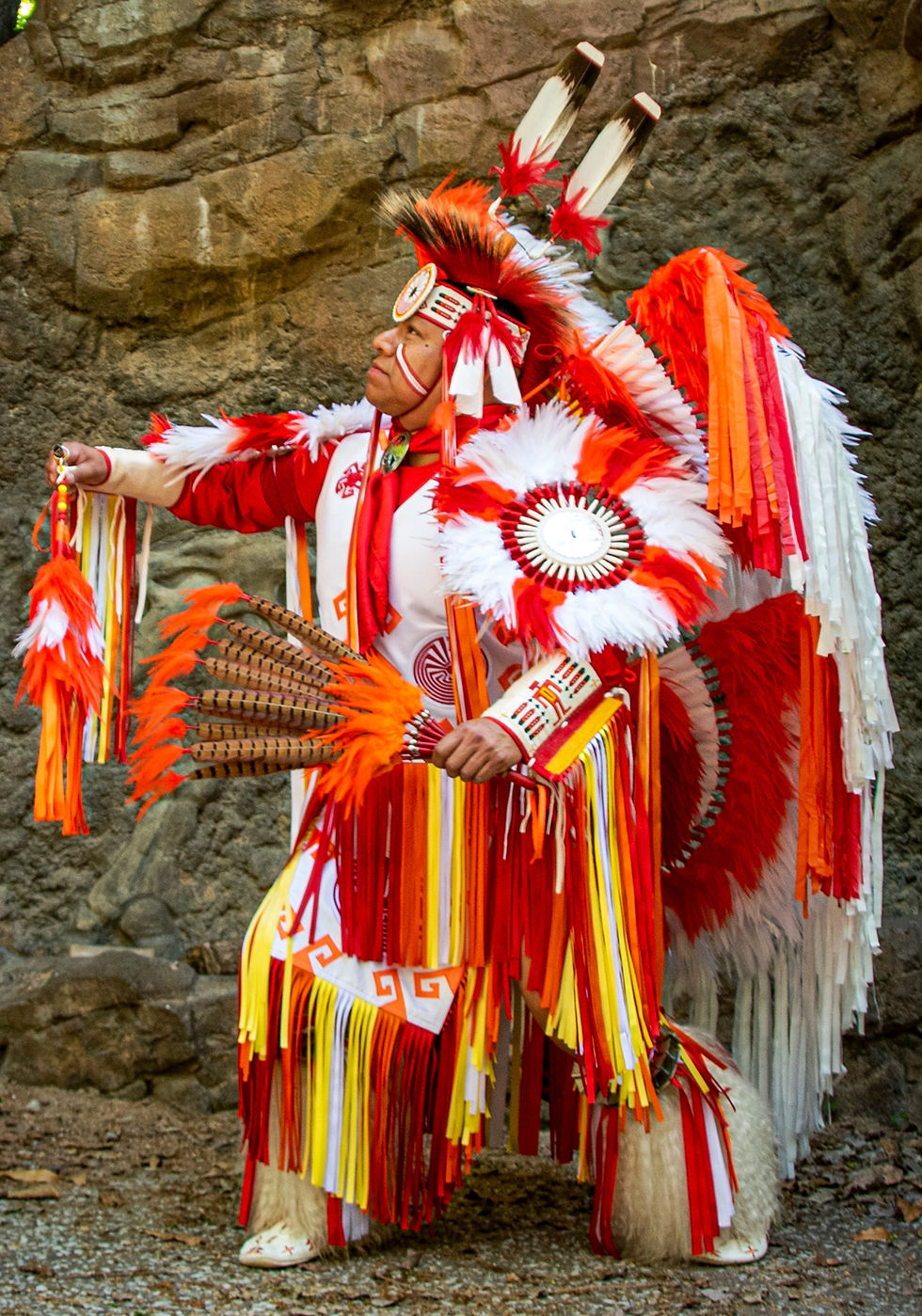KANSAS AND THE NATIVE AMERICANS
- marketing408
- Nov 2, 2022
- 4 min read
We, as Kansans, have a long history with American Indians.

Kansas, meaning “people of the south wind” from a Sioux word, was the original home to several tribes such as the Arapaho, Comanche, Kanza, Kiowa, Osage, Pawnee, and Wichita. Historically, the American Indians were treated horribly, and there is nothing we can do to fix that, but we can empower them and make them feel more seen and accepted today. (3)

In an article written by Christina Haswood, she tells us how we can achieve this.
“First, it’s important to know the past and honor the sacrifices made for us Native peoples to be here today.” (4)
Here is a SUPER brief history of our Native Friends:
As early as 1803, President Thomas Jefferson proposed a plan that offered eastern tribes land west of the Mississippi River. This offer was extended to volunteers but proved unsuccessful. (1)
In the 1820s, Kansas was permanently set aside as an Indian Territory by the US government and was closed to settlements by whites. Resettlement began to make room for eastern tribes to relocate to Kansas. The Kanza Nation ceded 20 million acres of their territory and was limited to a northeast Kansas reservation, and the Osage Nation was limited to a reservation in southeast Kansas.
Although the federal government assured tribes that they would not be moved again, Kansas Territory opened for settlement in 1854 and forced the removal of native peoples. Both Kansas and Nebraska were re-designated as territories and opened to white settlement. Many settlers moved into Kansas Territory after the Civil War, accelerating the movement of Indians off the land.
Some eastern and Midwestern tribes signed treaties agreeing to move onto reservations in Nebraska, Oklahoma, and Kansas in exchange for undisputed ownership of the new lands. However, other tribes refused or resisted and were forcibly moved and killed by the U.S. Army.
At that point, the vast majority of Kansas Indians, including many of the tribes originally native to the area, were forced to go through a second removal to Oklahoma in the late 19th century, where many still live today.
However, four tribes are left in Kansas
The Kickapoo Tribe of Kansas in Horton, Kansas
Ioway Tribe of Kansas and Nebraska in White Cloud, Kansas
Prairie Band Potawatomi Nation in Mayetta, Kansas
Sac and Fox Nation in Brown County, Kansas (2)
The Indian Citizenship Act of 1924 was passed by Congress but left up to the states for enforcement until 1957. Many states prevented Natives from voting. It has been fewer than 100 years since Natives were granted citizenship and became able to exercise their voting rights. Yet, like many other marginalized groups, they are still fighting voter suppression across the U.S. (4)
Patty Ferguson-Bohnee tells this story about how hard it was for her grandmother to be able to vote.
“I will never forget the Navajo grandmother who spoke only Navajo and could not vote after Arizona passed its voter ID law in 2004. She tried several times to obtain an Arizona ID on her own but was denied because she was born at home in a hogan, and the boarding schools changed her Navajo name to English. She lived in a modest home on the Navajo Reservation without electricity, running water, and a traditional lifestyle taking care of her sheep. She was embarrassed and devastated when she turned away from the polls for not having an ID. Working with her, a team from the Indian Legal Clinic traveled five hours to meet her at multiple agency offices to obtain her delayed birth certificate; we then went to two separate Motor Vehicle Division Offices. The first one did not issue same-day photo IDs, and the other initially denied her request. The office rejected her delayed Navajo birth certificate until I could intervene and demonstrate to them that it was an acceptable document. The system failed to consider her reality as a Navajo woman and failed to value her as a voter. Fortunately, she was persistent in exercising her right to vote, but not all voters are, nor should they have to be.” (5)

Things are looking up. On November 24, 2020, Kansas Gov. Laura Kelly Proclaimed November as National American Indian Heritage Month.
“This type of recognition from our leaders makes us feel seen and accepted but shows a lot more work needs to be done.” -Christina Haswood
“The efforts of Native American representation and inclusion have improved since I was in the K-12 public school. The future holds more work, but it is bright for Native folks. We are too often forgotten in the data and decision-making tables. A wave of momentum is changing that as more Natives file for office, the youth mobilize their voices for change, and communities celebrate their diversity. Native Americans in Kansas will continue to be resilient and honor the sacrifices of our ancestors.” (4)
How can we learn about the past other than by looking things up on Google?

Well, this Friday, November 4th, Wichita War Dancer will be in the Opera House at 6 pm. Wichita War Dancer is a Professional Native American performer specializing in education and the preservation of cultural dance. This will be a perfect place and opportunity to learn more about our Native Friends.
This is a FREE event thanks to a grant from Humanities Kansas.
Come out and celebrate and learn OUR history.

Sources:

.png)
_edited.png)



Comments